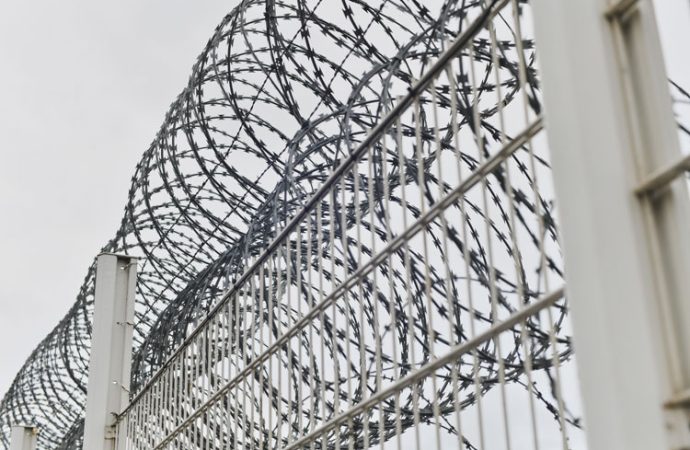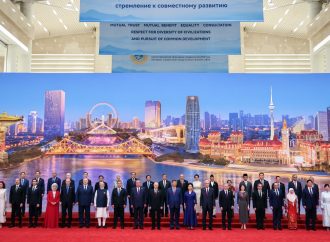Author Recent Posts Yumna Sohail Latest posts by Yumna Sohail (see all) Why fighting insurgency should be a top priority for Pakistan? – February 3, 2023 International Law and Pakistan’s Case of Indian-Sponsored Terrorism – January 9, 2023 Pakistan’s border security: Challenges from Afghanistan – December 21, 2022
Due to the persistent deadly attacks from the Afghan Taliban, Pakistan initiated the border fencing process in 2016. Pakistan and Afghanistan’s border has remained porous for a long time. To secure the border and to control cross-border movement, Pakistan’s military planned the border fencing. The military has already successfully covered a significant border area and the remaining area is expected to be completed by the end of this year.
Countries build walls and fence the borders to mark the boundaries and protect borders from illegal immigration, smuggling, trafficking, etc. The role of fencing and borders is not limited to controlling the influx of people and goods. Fencing is to monitor, collect data and categorize the population entering and exiting the border. This security checkpoint is to keep a check and balance on the border movement and to prevent any illegal entry.
Reports from 2021 released that the Pakistani military has successfully fenced the border with Afghanistan by up to 90%. The remaining 10 % is to be completed by 2022. Bajaur, Khyber districts, Mohmand and Waziristan were fenced initially which are about eleven feet in height with a diameter of approximately 3 inches. A two-meter space is infused with concertina wire coils that separate the border barrier between Afghanistan and Pakistan which has two sets of chain link fences. Surveillance cameras are installed around the border area by the military to monitor cross-border activities.
Around 1,000 forts are planned to be constructed in the area to enhance security. As per the statement of the DG ISPR (Inter-Service Public Relations), more than 600 forts were built in the initial year of 2022. In addition, the cross-border movement will only be accessible through the designated areas of the border.
Border problems have existed since the independence. Afghanistan has not cooperated with Pakistan in establishing a unified border management system yet it blames it for cross-border movements. In the past few years, reports emerged of the Afghan Taliban removing the border fence in 2021, which had to be put up by Pakistan again. This noncooperation concerned the Pakistani authorities yet the fencing process continued.
In the past twenty years, different militant groups such as Tehreek-e-Taliban Pakistan (TTP) and Al-Qaida have used Pakistan and Afghanistan’s border areas. Pakistan believes that the security measures it is taking will considerably increase border security. These measures are likely to protect the border from militants and potential militant attacks but the question that arises is will the fences alone prevent the Afghan Taliban from crossing the border?
Since Afghanistan is a landlocked country, most of its trade happens through Pakistan. Apart from that, Afghanistan is actively involved in smuggling narcotics to different areas around the world. The smuggled narcotics cross the border and end up in the local markets where people can easily access them. Fencing will decrease the chances of smuggling through the border and it will become difficult for the smugglers to smuggle the drugs through the main gates.
Protecting the border is one of the reasons but another feature of it is that it will increase the recognition of the Durand Line between Pakistan and Afghanistan in the eyes of the world. It will be seen as the permanent borderline between the two countries.
Durand Line is still not accepted by Afghanistan as the international border between Pakistan and Afghanistan. Afghanistan denies its legitimacy since it was formed by the British and is a “Colonial Imposition” that divided the Pashtun tribes between the two states. Whereas Pakistan considers the border legitimate. Due to this conflict, terrorism has remained part of the countries but since Pakistan started the fencing project, it has become problematic for them to move between the areas. It is time to have a talk with the Afghan Taliban to settle the border issues and come to an agreement.
Pakistan has faced a massive refugee crisis since the 1980s. The fencing will limit illegal immigration but the already existing refugees are a matter of concern as well. Fencing has caused problems for the locals living around the border area since they cannot easily meet their relatives now. Farmers who have their farms in between the border have faced a loss after fencing. In order to compensate for the loss, Pakistan is planning to pay the farmers for their loss and is working with the Afghan government to resolve the problems caused by fencing.
To safeguard the borders and mark the territory, Pakistan has taken a good initiative to fence the border. Along with fencing, a proper border management system is required to keep track of the border movement. Once the fencing project is finished, Pakistan can work on improving the security systems at all the borders with Afghanistan to track immigration and the movement of goods. Unquestionably, these initiatives will improve security but the bitter truth is that until and unless Afghanistan achieves sustainable peace, Pakistan is likely to face these problems frequently.
- Why fighting insurgency should be a top priority for Pakistan? - February 3, 2023
- International Law and Pakistan’s Case of Indian-Sponsored Terrorism - January 9, 2023
- Pakistan’s border security: Challenges from Afghanistan - December 21, 2022



















Leave a Comment
Your email address will not be published. Required fields are marked with *